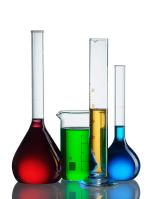|
This section contains 750 words (approx. 3 pages at 300 words per page) |

|
Measuring the Rate of Reactions between Magnesium and Sulphic Acid
Investigating the effect of changing concentrations of H2SO4 (Sulphuric Acid) on reaction rates.
Background Information:
The formula for experimenting the change of reaction rates when concentration is varied is:
Mg (s) + H2SO4 MgSO4 (aq) + H2 (g)
When this reaction takes place, certain characteristics can be noticed. The reaction will cause fizzing and produces H2 (Hydrogen Gas), which can be identified by the white smoke given off when Magnesium is reacted with Sulphuric Acid.
Magnesium is not the only element that could have been used to perform this reaction. Any of the following similar elements could have been used (in order of reactivity):
Potassium
Sodium
Calcium
Magnesium
Iron
Lead
Gold
This is just a selection of the elements available to complete this experiment, however, Magnesium was chosen because it is not too fast that it is difficult to record accurately when the gas is given off...
|
This section contains 750 words (approx. 3 pages at 300 words per page) |

|


